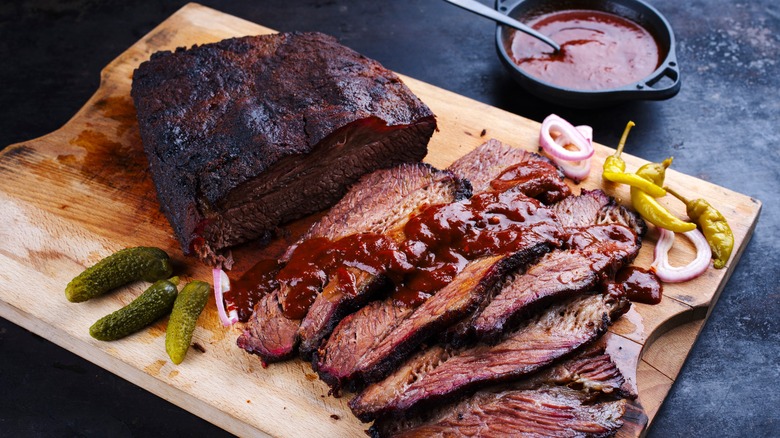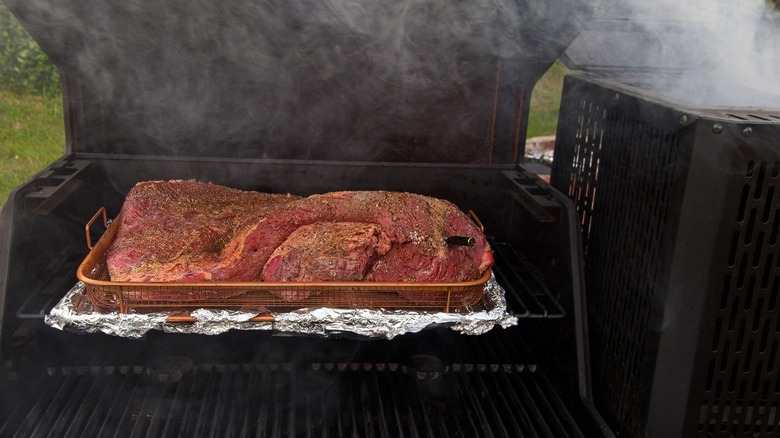Smoking Meat Like A Real Grill Master Comes Down To These 2 Factors
Many people who love to grill eventually decide to invest in a smoker, allowing them to prepare all kinds of smoky, tender meats to enjoy. (We've ranked 18 cuts of meat you can smoke to give you some inspiration.) However, if you're not quite getting the results you want, it may be time to bring in the experts. That's precisely why we've asked Greg Gatlin, a James Beard Award finalist and owner of Gatlin's Fins & Feathers (as well as founder of Gatlin's BBQ) to give us the lowdown on the key factors for smoking meat like a pro.
According to Gatlin, the biggest mistakes you're making when using a smoker have to do with time and temperature. While you might be used to hanging out by the grill, tending to your proteins, and flipping and assessing them to make sure they don't overcook, smoking is a little different. Time is the unofficial sous chef when you're smoking meat. Gatlin emphasizes that his top tip for smoking meats is patience! "Smoking good meats takes time and if you are in a hurry your final product will probably not end up being what you expected," Gatlin explains. Once you know the basics of how to smoke almost any type of meat, such as considering the environment and setting your grill up correctly, you can get a bit more creative with things like the type of wood chips you use. However, taking your time should always yield the best results.
Setting yourself up for success
Even if you've allotted a generous amount of smoking time, your meat may still fall short of expectations if you ignore Greg Gatlin's second tip: Always keep an eye on the temperature. You may have heard that smoking is best with a low and slow approach, but that doesn't mean you can set your temperature and just come back a few hours later without checking on your smoker. Managing your fire is key. "Having your fire either too hot or too cold affects so many factors when smoking," Gatlin explains. "Letting your fire get hot and burning off until it has a good clean smoke is extremely important [because] it can affect the flavor of your meat in so many ways." That means allowing your fire to move past the stages of dark gray and white smoke until you see blue smoke (an indication of a cleanly burning fire), which signals that you've got an even, steady heat source.
So, how exactly do you ensure your smoker is always operating at the right temperature? Again, patience is the name of the game. "Once your fire has settled and is burning evenly, add your wood source slowly and use your damper system to control your fire," advises Gatlin. With those two tips in mind, you should soon be smoking meat like the pros.

